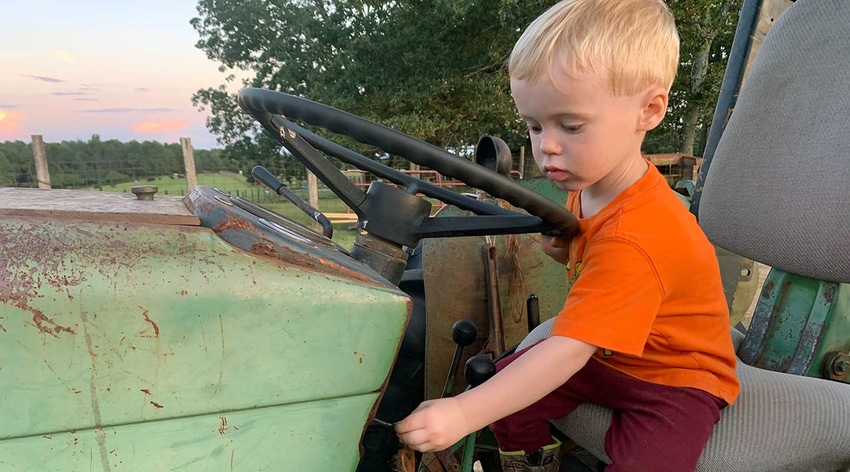
It is unlikely that the shiny green machine rolling out of the factory in Dubuque, Iowa, sometime between 1972 and 1975 knew it was destined to play such a pivotal role in a central Alabama ranch family’s history. But it has nonetheless managed to both unite and frustrate at least three generations.
Mama proudly pulled both a New Holland rake and square baler (similar vintage) with this gem. That was back before Daddy decided his John Deere 2030 or anyone working with him needed any kind of relief from the summer heat. I guess he had mercy on his children because the subsequent canopy addition was in play for my sister and me once we could reach the pedals.
It was the perfect tractor on which to learn to drive. No cab, no AC, no bells, no whistles. The gauges that mattered worked. No need for a radio. You needed to hear every click and rattle of the equipment you were pulling.
Shorts and flip flops were forbidden for anyone attempting to drive even in the summer. After you demolished your first fire ant hill with the hay mower, you forgot all about wanting to “work on your tan.” Not to mention, you’d blister any exposed flesh the first time it made contact with basically any part of the tractor, including the steering wheel, which always turned your hands black. Your Clorox bottle (or Pepsi Cola 2 liter) of ice tied with twine to whatever broken plastic part was jutting out of the fender would be sauna water by mid-morning.
The numbers for the gears were mostly wore off by the time we took to the wheel. But no worries. We could drop that beauty in I-4 in our sleep. Nodding off was not a legitimate threat though thanks to the sound of the gears grinding when you tried to shift up or down, not to mention the occasional jumping out of park, and the ridiculously uncomfortable metal seat (regardless of the old pillows, blue jeans, and foam we tried to pad it with).
If the hay was cooperating, II-5 was the gear of choice for a speedy rake job, except for the corners and turn-around. After all, if we jacked up the windrow for the baler man (Daddy), we may as well just pack up our peanut butter crackers and Coke and go home. But we couldn’t get too cocky tooling down the road in any gear higher than II-6. That green beast would start dancing across the highway, laughing at us spinning the steering wheel in a panic, praying for Jesus to calm the tractor demons.
Transmission, water pump, radiator—it was always full of surprise breakdowns. Daddy spent hours nursing it and cursing it. But it always came back to life. It knew we couldn’t operate without it. Daddy always prayed for it to run just one more year.
During its most recent deployment in the hay field this summer, the clutch was giving Rachel fits. Naturally when our mechanic friend Mitch came for supper one night, she took advantage and petitioned him to investigate the issue.
“Has the clutch had ever been replaced?” Mitch asked as 3-year-old J.B. pulled himself up into the new padded tractor seat (finally) and pretended to drive.
Rachel shot me a look and we shook our heads. I was picturing Daddy in his finest ripped hayfield apparel, hunched beside the tractor, trying to manipulate tiny parts with thick, grease-covered fingers. Neither of us could recall a clutch replacement.
“Don’t think so,” Rachel said.
“An adjustment will get you by the summer, but it needs replacing,” Mitch said.
One more season. One more upgrade. Lord, please have mercy and let our 2030 run for one more year.
About the Author(s)
You May Also Like




